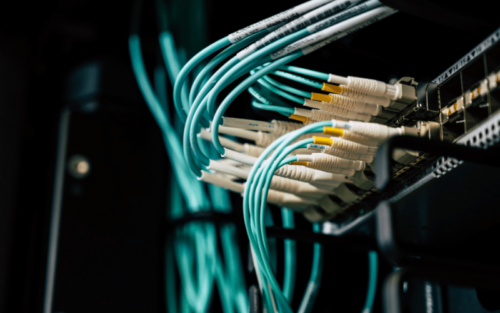Mastering Network Configuration with DHCP
Mastering Network Configuration with DHCP
Table of Contents
What is a Dynamic Host Configuration Protocol ?
What is the Difference Between DHCP and a Static IP?
How Do the DHCP Server and Client Communicate?
Mastering Network Configuration with DHCP
In the ever-evolving landscape of network technology, the need for efficient, automated systems has become paramount. At the forefront of these systems is the Dynamic Host Configuration Protocol (DHCP), a cornerstone of modern IP Networks that simplifies the complex process of network management. This protocol automates the assignment of IP addresses, ensuring that devices can connect to a network quickly and with minimal manual intervention. Mastering DHCP not only streamlines network configuration but also enhances the reliability and performance of your network infrastructure. In this comprehensive guide, we delve into the mechanisms of DHCP, its critical role in contemporary networks, best practices for configuration, security considerations, and a glimpse into the future of network management.
What is a Dynamic Host Configuration Protocol (DHCP)?
The Dynamic Host Configuration Protocol, better known as DHCP, is an essential protocol within the architecture of most modern networks. Its primary function is to automate the once cumbersome task of manually assigning IP addresses to devices on an IP network. Utilizing a client-server model, DHCP servers assign IP addresses and other crucial network configuration details to client devices, facilitating their seamless integration and communication within the network. This process not only includes the allocation of IP addresses but also encompasses the distribution of related configuration information such as subnet masks, default gateways, and DNS server addresses. DHCP operates through a series of messages exchanged between the client and server, effectively negotiating the lease terms of an IP address and ensuring devices can communicate effectively without manual setup. By automating these tasks, DHCP plays a pivotal role in enhancing network efficiency, scalability, and manageability, making it a foundational element of network administration.
What is the Difference Between DHCP and a Static IP Address?
The Dynamic Host Configuration Protocol (DHCP) plays a vital role in the world of IP networks, addressing the need for scale and ease of management that is paramount for network administrators. As network environments become increasingly complex and user demands rise, manual IP address allocation transforms into an overwhelming, and potentially impossible, task. DHCP brings an element of automation and intellectual capability to address allocation, minimizing administrative efforts and reducing the chance for errors that can lead to network downtime or create security vulnerabilities. One of the main advantages of DHCP is its capacity to dynamically lease IP addresses to devices. This capability proves invaluable in environments where devices are continuously joining and leaving the network, including corporate infrastructures or public Wi-Fi networks. By providing temporary IP assignments, DHCP enhances the network’s address space efficiency and mitigates the risk of address exhaustion, while accommodating a changing device landscape. This dynamic allocation also ensures smooth network access for a variety of devices, ranging from conventional computers to a rapidly increasing number of IoT devices, all without the need for manual configuration. In addition, DHCP’s ability to recover and redistribute IP addresses allows networks to respond to alterations in device connectivity without the need for manual intervention. This flexibility is key for upholding network availability and performance in changing circumstances, rendering DHCP an indispensable tool for contemporary network administration.
How Do the DHCP Server and Client Communicate?
When a client device first connects to a network and seeks an IP address, it initiates communication by broadcasting a DHCPDISCOVER message to the network. This message is essentially a request for an IP configuration. All DHCP servers on the network have the potential to receive this message due to its broadcast nature. In response, a DHCP server that can allocate an IP address responds with a DHCPOFFER packet. This packet is directed back to the client using the network’s broadcast address (255.255.255.255), ensuring it reaches the requesting client despite it not yet having a unique IP address assigned. The DHCPOFFER packet contains crucial configuration information, including the IP address the server is offering (noted in the YIADDR field), along with other network configuration details such as subnet mask, default gateway, and DNS server addresses. This bidirectional communication initiates the process of dynamically assigning an IP address to the client, setting the stage for further negotiation and eventual network access authorization for the client device.
Is DHCP a BOOTP Protocol?
DHCP indeed has its roots in the Bootstrap Protocol (BOOTP), which emerged in 1985 as an early method to manage IP addresses within networks. While BOOTP laid the groundwork by introducing mechanisms for automatic IP address assignment, it fell short in areas of flexibility and efficiency, particularly because it required manual entry of configuration information for each client and lacked the ability to recycle IP addresses that were no longer in use. DHCP was developed as an extension and enhancement of BOOTP, designed to address these shortcomings by automating the assignment process and introducing the dynamic allocation of IP addresses. This advancement allowed for a more scalable and manageable approach to network configuration, significantly reducing administrative overhead. Additionally, DHCP servers are backward compatible with BOOTP clients, incorporating the functionality to respond to BOOTP requests. This ensures that even as networks evolve to adopt DHCP for its superior capabilities, they can still support devices operating on the older BOOTP protocol, making DHCP a versatile and comprehensive solution for IP network management.
Related Reading
What is the DHCP Protocol?
By Michael Marvin | August 30, 2023
What is the DHCP Protocol? Table of Contents What is the DHCP protocol? What is the DHCP protocol for IPv4? Why does the DHCP protocol use UDP not TCP? Does the DHCP protocol assign port number? What is the DHCP protocol? The DHCP (Dynamic Host Configuration Protocol) is a network protocol used to automatically assign… Read More → 
Dynamic Host Configuration Protocol (DHCP)
By Michael Marvin | July 21, 2023
Dynamic Host Configuration Protocol (DHCP) Table of Contents What is DHCP? Which is better DHCP or static IP? Can I use DHCP and static IP at the same time? Why not use DHCP? What is DHCP? DHCP stands for Dynamic Host Configuration Protocol. It is a network protocol commonly used to automatically assign and manage… Read More → 
What is a DHCP Server?
By Michael Marvin | June 15, 2023
What is a DHCP Server? Table of Contents What is a DHCP server? What is the biggest benefit to using a DHCP server? What are the disadvantages of using a DHCP server? Does every network need DHCP server? What is a DHCP Server? A DHCP server, or Dynamic Host Configuration Protocol server, is a network… Read More →






